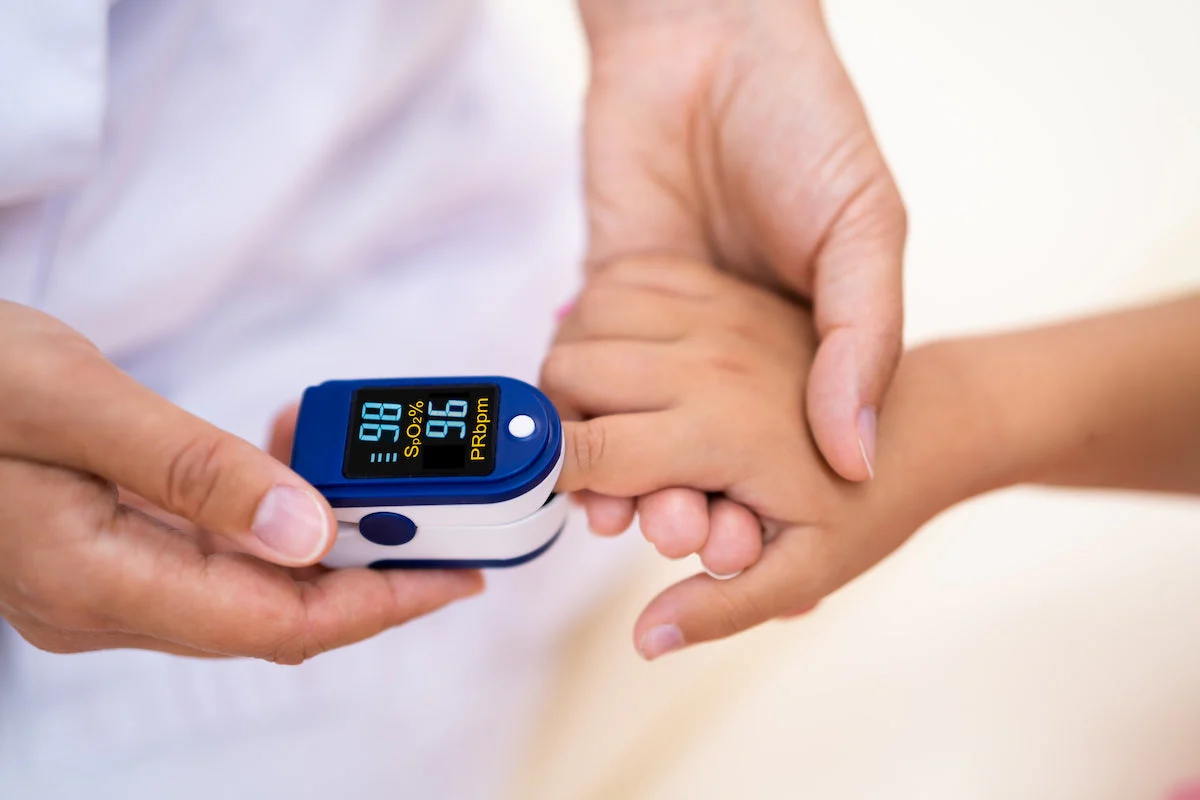Pulse oximeters are invaluable tools for monitoring health, especially for those with respiratory or heart conditions. The Clear Wave Pulse Oximeter offers an easy, accurate way to measure blood oxygen saturation (SpO₂) and pulse rate in seconds. Whether you’re using it to track your vitals during exercise, as part of a health condition management plan, or simply to keep an eye on your well-being, learning to read your Clear Wave Pulse Oximeter correctly is crucial.
This guide provides detailed instructions on interpreting the readings, understanding what each metric means, and tips for obtaining accurate results.
Why Use a Pulse Oximeter?
Pulse oximeters like the Clear Wave model measure two key health indicators:
- Blood Oxygen Saturation (SpO₂): This percentage indicates the level of oxygen in your blood.
- Pulse Rate (BPM): This reflects your heart rate, or how many times your heart beats per minute.
Knowing these metrics can help identify potential health issues early, making a pulse oximeter an essential tool for people managing chronic conditions like COPD, asthma, or COVID-19, or anyone interested in maintaining optimal wellness.
Setting Up the Clear Wave Pulse Oximeter
Step 1: Power On the Device
The Clear Wave Pulse Oximeter typically has a simple power button. To turn it on:
- Press the power button once.
- The device screen should light up, signaling it’s ready for use.
If the screen doesn’t turn on, check the battery compartment and replace batteries if necessary.
Step 2: Positioning the Oximeter
For accurate readings, proper placement of the oximeter is essential:
- Insert your index finger into the oximeter, ensuring it fits snugly.
- Keep your hand steady and avoid movement, as this can impact the reading accuracy.
The sensor reads through the skin, so it’s best to remove any nail polish or false nails for precise results.
Step 3: Wait for the Reading
Once your finger is in place, wait a few seconds as the oximeter calculates your SpO₂ and pulse rate. The display will then show your readings in large, easy-to-read numbers.
How to Interpret Your Clear Wave Pulse Oximeter Readings
The Clear Wave Pulse Oximeter typically displays two main values:
- SpO₂: This is your blood oxygen saturation level.
- BPM (Beats Per Minute): This indicates your pulse rate.
Understanding SpO₂ Levels
SpO₂, or blood oxygen saturation, is shown as a percentage:
- 95-100%: Normal and healthy range.
- 90-94%: Indicates low blood oxygen levels and may warrant further monitoring or consultation with a healthcare provider.
- Below 90%: Considered a clinical emergency (hypoxemia) and requires immediate medical attention.
Interpreting BPM (Pulse Rate)
Your pulse rate reflects your heart rate:
- 60-100 BPM: Normal range for most adults.
- Below 60 BPM: Known as bradycardia, can be normal for athletes but may require medical evaluation if you’re experiencing symptoms.
- Above 100 BPM: Known as tachycardia, it could indicate stress, anxiety, dehydration, or a medical issue that might require further examination.
Additional Indicators on the Clear Wave Pulse Oximeter
Some Clear Wave Pulse Oximeters come with additional symbols or indicators, such as:
- Perfusion Index (PI): Represents blood flow strength, typically displayed as a percentage. Higher PI indicates stronger blood flow.
- Pulse Bar Graph: Visual representation of your pulse, which helps assess the stability of the reading.
Tips for Accurate Readings
Follow these tips to ensure you get the most accurate results from your Clear Wave Pulse Oximeter:
- Stay Still: Any movement can interfere with the reading accuracy.
- Warm Your Hands: Cold hands can reduce blood flow, resulting in inaccurate readings. Warm your hands before using the device.
- Avoid Strong Light: Bright or direct lighting can interfere with the sensor. Use the device in a shaded or dimly lit area for optimal results.
- Check Battery Life: Low battery levels can impact device performance. Regularly replace batteries to maintain accuracy.
When to Use the Clear Wave Pulse Oximeter
Knowing when to check your SpO₂ and pulse can help manage your health effectively:
- During Physical Activity: Track changes in oxygen levels and heart rate during exercise, particularly if you have a respiratory condition.
- At High Altitudes: Altitude can lower oxygen levels, so checking your SpO₂ can be useful if you’re in a high-altitude location.
- If You Feel Short of Breath: Low oxygen saturation might indicate a respiratory issue; a pulse oximeter can provide immediate insights.
- For Chronic Conditions: Regular monitoring is beneficial for conditions like COPD, asthma, and heart disease to track any fluctuations in oxygen levels.
Troubleshooting Common Issues with Clear Wave Pulse Oximeter
Issue: Inconsistent Readings
Solution: Ensure your finger is properly positioned, and try warming your hands to improve circulation.
Issue: No Reading Displayed
Solution: Replace the batteries and check that the device is securely closed.
Issue: Low or Fluctuating SpO₂ Levels
Solution: Sit still and relax, as anxiety or movement can affect the reading. If low levels persist, consult a healthcare provider.
FAQs
1. How often should I use my Clear Wave Pulse Oximeter?
Ans – Using it once or twice a day can be helpful if you are monitoring a condition, but check with your doctor for specific recommendations.
2. Can nail polish affect my reading?
Ans – Yes, nail polish, particularly dark colors, can interfere with the oximeter’s sensors. Remove polish for the most accurate results.
3. What should I do if my SpO₂ reading is consistently below 90%?
Ans – If you see persistent low oxygen levels, it’s best to consult a healthcare professional as it may indicate a need for medical evaluation.
4. How can I improve my SpO₂ levels?
Ans – Deep breathing exercises, staying hydrated, and practicing relaxation techniques can help improve oxygen levels. Follow your healthcare provider’s advice if you have a chronic condition.
5. Is it normal for SpO₂ levels to drop during exercise?
Ans – A slight drop may be normal, but it shouldn’t fall below 90%. Monitor your levels, and stop exercising if you experience shortness of breath or discomfort.
Conclusion
The Clear Wave Pulse Oximeter is a reliable tool for keeping track of your vital health metrics. By understanding your readings, knowing what each value means, and following best practices for accurate measurements, you can ensure that your pulse oximeter becomes an effective part of your health toolkit.
Whether you’re monitoring for personal wellness or managing a health condition, regular use of the Clear Wave Pulse Oximeter can provide peace of mind and valuable health insights.



